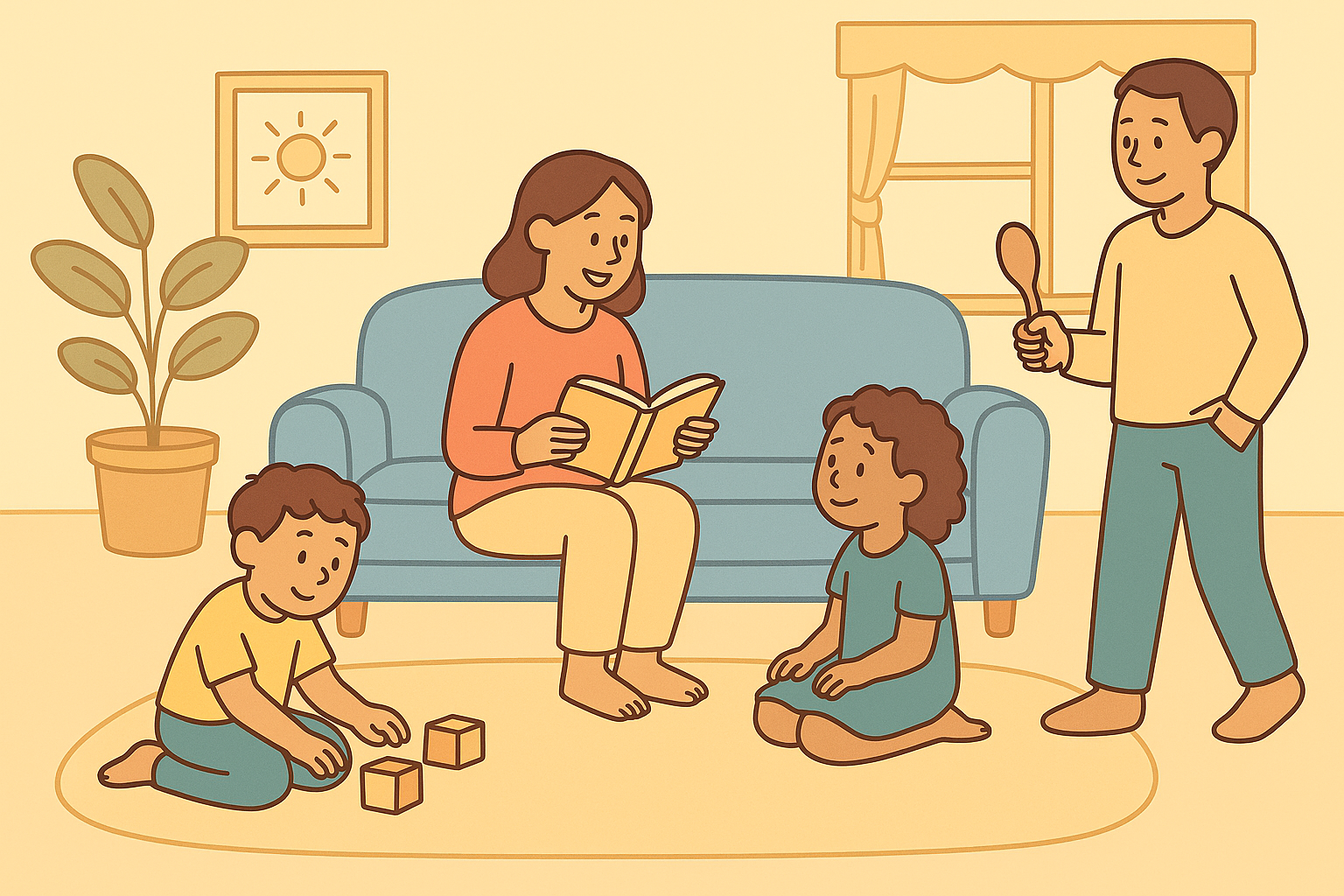Balancing Structure and Flexibility: Finding Your Family Rhythm
Balancing Structure and Flexibility: Finding Your Family Rhythm
Every family wants peaceful mornings, calm evenings, and time that actually feels connected — not chaotic.
But here’s the truth: too much structure can feel rigid, and too little can feel overwhelming. The magic is in the rhythm — the balance between routine and freedom that makes daily life flow with calm energy and real connection.
Finding that balance doesn’t mean being perfect. It means listening, adjusting, and creating a rhythm your family can trust.
Why Rhythm Matters More Than Routine
A routine is what you do. A rhythm is how it feels.
Rhythm allows for consistency without pressure. It gives everyone — parents and kids — a sense of direction while still leaving space for life’s surprises.
💡 Fuzzigram tip: Rhythm is routine with compassion built in.
You might also like Morning to Night: Building Predictable Routines Kids Can Trust.
Step 1: Identify Your Family’s Natural Flow
Every household already has a rhythm — even if it feels messy.
Notice when your family naturally has more energy, focus, or calm.
Morning energy for chores or learning?
Afternoons better for play or rest?
Evenings calm for reading or family time?
💡 Fuzzigram tip: Build structure around your family’s natural energy — not against it.
Step 2: Define a Few “Anchor Points”
Anchor points are predictable moments that ground your day:
Breakfast together
After-school snack
Bedtime story
They act like emotional signposts for kids, helping them feel secure no matter what changes around them.
💡 Fuzzigram tip: You only need 3–4 strong anchors for a reliable daily rhythm.
Step 3: Keep the Middle Flexible
Between anchors, leave space for spontaneity — playtime, creativity, or rest. Rigid schedules can backfire, especially for younger kids who need room to explore.
💡 Fuzzigram tip: Kids learn balance when they see you living it.
Step 4: Adjust Expectations for Different Seasons
Life changes — school starts, jobs shift, babies arrive. Instead of clinging to one “perfect” routine, create a rhythm that flexes with your season of life.
“Right now, we’re focusing on earlier bedtimes.”
“Summer’s about more outdoor time and fewer alarms.”
💡 Fuzzigram tip: Flexibility is consistency — it teaches resilience.
You might also like Handling Routine Changes: Travel, Visitors, and Transitions.
Step 5: Create Calm Cues, Not Clocks
Instead of barking “It’s time for bed!” use gentle sensory cues:
Dim lights
Quiet music
Warm bath or bedtime scent
💡 Fuzzigram tip: Kids respond better to rhythm than to rigid time checks.
See Designing a Calm Home Environment That Supports Routine.
Step 6: Model Grace, Not Guilt
Some days flow perfectly. Others don’t. When things fall apart, show your kids what healthy flexibility looks like:
“We didn’t get to our walk today — we’ll try again tomorrow.”
💡 Fuzzigram tip: Rhythm isn’t about control — it’s about connection that adapts.
Step 7: Revisit and Refine
Check in every few weeks. What feels good? What feels rushed? Family rhythm is a living thing — it evolves as your children grow.
💡 Fuzzigram tip: The healthiest families don’t find one routine — they keep finding each other.
A balanced family rhythm gives your days structure — but also soul.
When you leave space for rest, laughter, and change, your family learns to move together — not just on time, but in tune.
Because parenting isn’t about rigid rules — it’s about building harmony that lasts.
This content is for educational purposes and is not a substitute for professional medical or psychological advice.
Popular Parenting Articles


